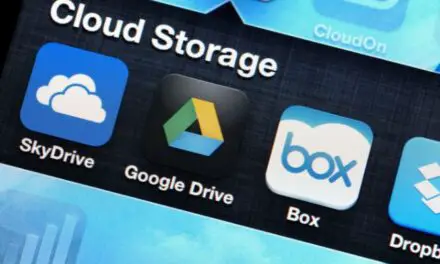Final Draft is the best-known screenwriting software available today. But, like most screenwriting software, it’s pretty expensive. If you know the basic layout and format for writing a screenplay, do you really need to fork over all of that money?
If you are a current customer, meaning that you already own Final Draft, you will have to pay $99.99 just to upgrade to Final Draft 12. To purchase the software period, it will run you $249.99. You can get discounts on those prices from time to time but it doesn’t change the central question.
Is Final Draft, or any other screenwriting software, such as Arc Studio, Highland, Trelby, or Celtx, worth the costs?
Table of Contents
Is Screenwriting Software Worth It?

If you are writing for a production company and they expect to see some of the tools that come with screenwriting software, such as revision marks and locked pages, screenwriting software is worth it. However, if you are just writing a one-off screenplay, it’s probably not worth it.
If screenwriting is your passion or you’re sure you will be writing scripts regularly in the future, you should consider using screenwriting software.
The software will help you to get all the formatting set up quickly and correctly – especially in the beginning when you are still learning the basics.
Screenwriting software will help you choose the right font and font size so your script looks professional and the formatting doesn’t get messed up. Courier or Courier Prime, 12pt is usually recommended.
It will also help you to get your margins and spacing set to the correct standard so that you don’t have to use a template.
All of this formatting actually serves a technical purpose and not abiding by it will make you look like an amateur and most likely annoy whoever you’re submitting it to.
Of course, the first thing that you find if you go looking for screenwriting software is Final Draft. The thing is, there is nothing special about Final Draft that you can’t find on Scrivener or a far cheaper alternative, such as Slugline or Highland, both of which cost $49.99.
The thing to understand about Final Draft is that it is so expensive because Final Draft’s marketing strategy has been insanely successful. They have convinced the world that their standard is the only standard that major production companies want to see.
You have to give it to them. The designers behind Final Draft software have done an outstanding job in the marketing sector. However, what we said above, about manipulating the format in something like Microsoft Word or Google Docs is very true.
While the two word processors are not designed for writing scripts, you can make them into scripts with only a light understanding of how the format in scriptwriting software works, which is often more than enough for someone just getting into the craft.
Who Should Use Screenwriting Software?
Anyone who is a scriptwriter on some level of the Hollywood ecosphere, working for a production company, or attempting to submit a highly professional script for either a competition or to get accepted by a studio should use screenwriting software.
Everyone else shouldn’t find it absolutely necessary to use scriptwriting software. Is it recommended? Sure. Owning the software and learning to use it will certainly help you along the way and show that you are willing to invest in your passion.
While a traditional word processor will do the trick, you will spend a lot of time delving deep into the format, tools, and insert settings to copy what you can do in scriptwriting software with the press of the button or a click of the mouse.
If you are looking to work for a production studio at the commercial or television level, it gets even more complicated. That’s right, writing a commercial script or a television script is far more complicated than writing a movie script.
Commercial scripts don’t even look like traditional scripts and it takes a deep understanding of the software to churn them out, especially if the commercial has a lot going on, several actors, or a ton of screen changes.
If you want to write for television, not only will you have to use professional screenplay software but you’ll also have to not live where you live. Any executive worth their salt will tell you that if you write for television, you have to live in Los Angeles and they are absolutely correct.
So, not only will you need to fork over a script (assuming you are hired by a production company for a TV gig), you’ll have to haul up stakes and make tracks towards L.A.
Can I Write Scripts Without Screenwriting Software?
You can definitely write scripts without screenwriting software. It will be difficult to do if you have never written a script before and have never seen the format, however, it can be done. The first thing that you need to do is look at screenplay examples.
That will give you an idea of the format and how things have to be laid out. If you are writing a script to submit for approval, an agency will toss your script straight in the garbage can if the formatting is weird. They won’t even read it.
It doesn’t matter if you literally just produced one of the greatest screenplays of all time. If you don’t get the format at least mostly write, your screenplay will be sharing space with the rats and seagulls in the city dump.
Related Article: Top 20 Reasons To Use A Large OLED TV As Your Next Computer Monitor
What Screenwriting Software Do Professionals Use?
Most screenwriting professionals use Final Draft. As we mentioned briefly above, Final Draft has been enormously successful in convincing the world that they are the only ones that have the latest and greatest industry tools.
However, Final Draft is far from the only screenplay software available and some would even say that there are better alternatives, even though Final Draft is admittedly hard to beat.
All of the various software in the above list have their own attractions, qualities, and features that some scriptwriters might prefer over any other. But all of them are excellent alternatives to Final Draft in their own way.
What Are The Benefits Of Using Screenwriting Software?
The quickest and most recognizable benefit is speed. If you are not using screenwriting software, you have to manually make the formatting adjustments in a word processor to achieve the correct formats.
In most screenwriting software, the terminology is ready to go. If you need to write a slugline, it’s right there at the click of the mouse. If you need to switch from a scene to dialogue, you can quickly adjust.
It even remembers character and location names so you don’t have to type them out in full every time.
A big benefit is that writing a script is a creative process and nothing kills the creative flow more than technicalities.
Without the software, you might find yourself constantly backtracking to correct some minor formatting issue and that will deaden your creative flow.
Are There Disadvantages To Using Screenwriting Software?
Apart from cost, there aren’t many disadvantages to using screenwriting software. Even if you don’t want to spend money, good free screenwriting software, like Kit Scenarist and WriterSolo, will still save you time.
When you create, everything has the potential to become a distraction. Screenwriting software is not exactly complicated but it is fundamentally different than writing in Google Docs, in almost every way.
For newcomers, it’s a learning process while trying to create or craft a story. That’s pretty difficult to do, no matter who you are. Fortunately, it’s a short-lived disadvantage as you learn how the software works.
The other disadvantage would be the price. While there are cheaper alternatives available, not everyone has the money to fork over just to try and gain an advantage and get a toe in the industry door.
Is There Any Good Free Screenwriting Software?
There are a lot of options out there if you are looking for free software, however, the term “free” comes with some caveats. That often means you are limited on the number of projects that you can run at any given time.
Free scriptwriting software also has limits. Some of the formatting features that are second nature on a platform like Final Draft are completely absent with free software.
Here are a few free options and some of the disadvantages you can expect to find with free screenwriting software:
- Causality: It’s a weird format that uses “beats” rather than straight-up writing and you have to pay if you want unlimited writing
- Highland 2: The free downside is that everything you produce will be watermarked, which won’t look professional if you are submitting the script
- Prewrite: It’s more of a visual storytelling device than an actual scriptwriting tool.
- Kit Scenarist: All-in-one hub for research and writing but the scriptwriting part is not the most robust option in the world
- Milanote: Has a free but limited plan and is a quirky, index-card-based system that can take a bit of getting used to
- Fade In: The only “free” part is a demo
- Page 2 Stage: Free and open source but only available for Windows users
Nothing in life is truly free and while some of the above-listed software has some incredibly useful tools, you will often have to pay to take advantage of the more advanced features.
One good thing about some of the above software is that you can jump on for free and spend as much time as you need to learn how things work in screenwriting software. You will learn the formatting, the layout, how to write different scenes, how to switch back and forth from visuals to dialogue, and how to title each section.
Once you have everything down pat, then you can grab the paid software knowing that you can take full advantage of what you are paying for.
What Software Should I Use For Screenwriting?
There is no doubt that there are comparable software options to Final Draft. However, if you’re trying to make it into the big leagues, even if you are starting small, Final Draft is the best software to use for screenwriting.
The thing is, Final Draft happens to be what most professionals are using in the industry, so using it yourself gives you the advantage of being on the same platform as everyone else. If you are dead set against going with the grain, however, (as many of the best creative minds often do), Arc Studios is a close second to Final Draft.
The best part about Arc Studios is that it comes with three tiers—free, essentials, and pro. You can start for free, learn the software, and basically rank up as you go along.
All Things Considered
If you are a newbie in the television or movie industry or trying hard to get your foot in the door, screenwriting software is worth the effort. If you are just learning the ropes, getting a feel for scriptwriting, and focusing on self-improvement rather than specs, you don’t need it at all.
The advantage of screenwriting software is that most of them are excellent in what they offer and they are there for you when you are ready to take that next step.



